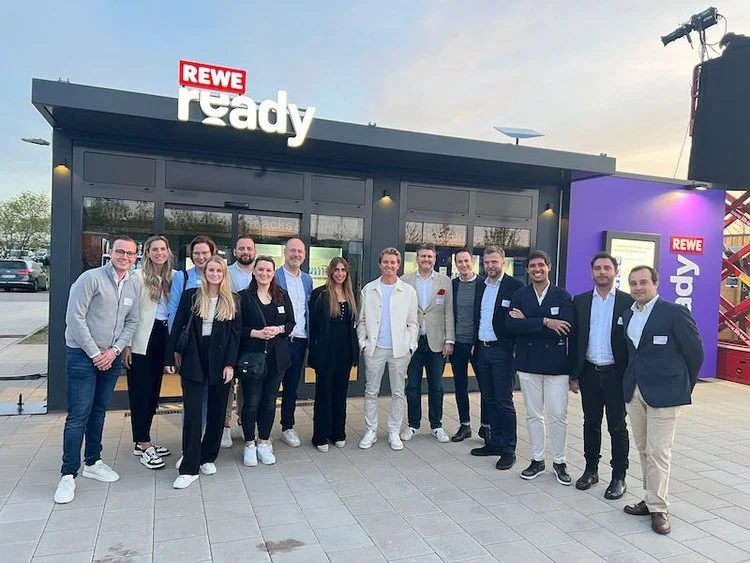Three trends that will change the sports retail industry
The retailing landscape has changed enormously due to evolving consumer habits, as well as technology like artificial intelligence and mobile payment services.
As we've transitioned into the digital age, many retail sectors have struggled to keep up, while others have excelled at maintaining their attraction. For instance, in the US, the sporting goods store sales amount to around $45 billion annually.
To ensure they maintain this position, sports retailers will have to find new ways to compete within an ever changing industry. Here are three trends that we believe will change the future of the sports retailing industry.
Focusing less on sales and more on experience
The focus of retail is changing. Many companies have shifted from having a sales-oriented business model to an experience-oriented model.
It’s believed that people no longer go to bricks and mortar retail stores to buy something they can purchase online. Rather, people are interested in having an experience, which should also result in sales.
The sports retail industry is well positioned to benefit from this transition. Many sell different types of exercise equipment, athletic footwear, and sports merchandise that prospective buyers can try in the store, giving them a feel for what it would be like when using it on the field, course, or court.
Nike, for instance, has already jumped on this trend: in 2016, the global powerhouse brand opened a 55,000-square foot retail experience store in New York City’s Soho neighbourhood.
The venue has a basketball half-court, a treadmill in front of a screen that simulates outdoor runs, and an eclipsed soccer trial area. After opening the store, Nike had a breakthrough year, with Q4 revenues increasing 6% to $8.2 billion. This growth highlights the success of its innovative retail experience store.
Using artificial intelligence to know customers
Retailers using artificial intelligence to understand a customer's needs and interests is not a new concept.
However, the sports retail industry certainly has room to grow by capitalising on this trend, as many sports enthusiasts have overlapping interests.
For instance, in the United Kingdom, soccer kit sponsorships with retailers like Nike and New Balance are a lucrative source of income for sports teams, especially in the Premier League.
In the 2018/19 season, Manchester United had the highest sales of soccer shirts (3,250,000 million units) and sold three million jerseys in the 2015/16 season.
Meanwhile, the UK sports betting market also sees substantial figures. According to Statista’s database, in 2020, the revenue from off-course betting in the UK hit £7.6 billion, and the revenue from on-course sports betting reached £198.28 million.
There’s lots of overlap between sports fans in the UK who spend money on club merchandise and the betting market.
Sites like Bonusfinder UK are popular with fans, as they list available bonuses across a range of gambling sites. People can then bet on soccer leagues like the Premier League, as well as other sports including darts and rugby.
Many of these people also have particular teams they support. This reality presents a unique opportunity to sports retailers. In fact, we’ve already seen companies utilize opportunities when there’s overlap.
For instance, crypto exchange Crypto.com partnered with Formula 1 because they believe there’s an overlap between the crypto core base and the fans of this sport.
Implementing more sustainability and recycling measures
The new generations, such as Gen Z, are health conscious, focusing on the environment and sustainability.
As such, retailers will want to consider this when they’re designing and brainstorming new products to release. Again, Nike is a good example of a sports retailer who understands this. In 2021, it is releasing five shoe styles that are made using roughly 20% recycled content.
The retail industry has been changing for years, and it’s not going to stop anytime soon. Luckily, while some sectors failed to keep up with the changes, the sports retail industry has maintained its attraction.
However, now isn’t the time to get comfortable. To stay relevant, sports retailers need to focus on innovation.
-
Southeastern Grocers, parent company of Fresco y Más, Harveys Supermarket and Winn-Dixie grocery stores, is deployi… https://t.co/Q5En8j6cEc
-
Check out the week's coolest retail technology plays, including @obsessVR @OcadoGroup @AEON_JAPAN @braincorp… https://t.co/RH2BIf6Jol
-
RTIH presents the retail technology week in numbers, including @CovariantAI @RetailTechShow @DennysDiner… https://t.co/WURUUgdCr0
-
Our Editor @ScottThomps74 rounds up the biggest retail tech stories from the past week including @BootsUK… https://t.co/IWj7BebUB1











Continue reading…